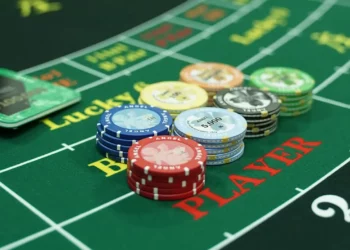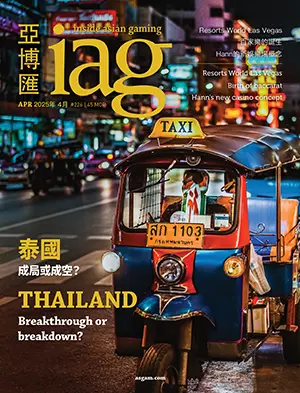Tables Turned
Multi-station games should stop mimicking live tables and develop play and betting styles of their own, says Tammy Ng of SJM
When the American moving picture industry was born in New York in the early 20th century, many of the first films looked like theatre productions. The acting was melodramatic like stage acting. Some of the movies even used an animated curtain on screen or in the auditorium to show the transition from one scene of the story to another. This use of old conventions by a new industry was probably because many of the people working in the fledgling sector came from a music hall or theatre background. It was what they knew, and it was what the audience knew. It was only as the industry matured and the talkies arrived that movie making developed its own special style on set and behind the camera.
Spool forward to the 21st century, and the same dynamic could be applied to the gaming industry. Some commentators have argued that the ultimate electronic table game should mirror, wherever possible, the play style and atmosphere of the live table game on which it’s based. The assumption is that if, for example, live table baccarat players like squeezing cards, then some similar-style function should be built into every electronic version.
Rethink required
The selling point of electronic table games in an overwhelmingly live table game market such as Macau is that they are cheap to run and allow modest income, mass-market players a taste of live table-style gaming action. But with reports that minimum bets at live tables in Macau are now available below the HK$100 mark in response to the challenging economic conditions facing the region, the multi-player proposition may have to be re-thought.
Optimists say this is the perfect opportunity for a new direction. Instead of multi-players merely mimicking traditional live games, they say the technology should be given its head and be allowed to take off in directions traditionalists may not have thought about. This applies especially to modes of betting.
Matt Hurst, City of Dreams: “The most striking difference that everyone notices when they come to Macau is the multi-station gaming—the electronic baccarat, the electronic sic bo, roulette and blackjack—all kinds of games you can see at the [G2E Asia] show.
“Mocha [Clubs, Melco Crown’s slot operation aimed at local players] started it all off at the Royal Hotel in 2003 with some Interblock stuff, and I thought it was incredibly clever that a) they tried some electronic table games in a slot hall, and b) that it was a springboard from tables to electronic gaming machines. I think it was a very brave and clever move and everyone followed on from there. Multi-station is certainly the biggest difference that you see from New Zealand.”
“We notice some differences in play on different manufacturer’s [machines]. On WMS for example, we see very low bets, but very high utilisation. IGT and Aristocrat are maybe the different end of the scale.
Peter Johns, MGM GRAND Macau: “I’m not a great lover of multi-terminal games any more. I saw the market about three years ago, and they were very popular. I’ve seen a decline [in popularity] in the last 12 months especially. Certainly that [electronic table] player is a different player from the slot player. We’re only seeing 10% to 15% crossover of multi terminal players who play slots. We measure that quite actively on the floor. I think since the table limits have come down around town that’s had an effect. Three years ago you used to find [mass market] baccarat tables had HK$300 minimums. Now you can go in casinos and get HK$50 [bet] minimums, maybe less.
Tammy Ng, SJM: “I think the reason multi-players have been going down [in Macau] is because there hasn’t been much product development in that sector. It’s been pretty stagnant since Interblock brought out their products—standard baccarat, standard sic bo, standard roulette. There hasn’t been much innovation in terms of layout and betting options. It’s an electronic game, so we should make it different from a table game—make it more of a slot game—to make it a better experience for the player. Like Peter [Johns of MGM GRAND Macau] said, there are HK$50 [live] baccarat tables now, so there’s no reason for a player to play a slot game that’s the same as a table game, with the same rules. But if you put more features in, that’s different from a table game, that will make it more attractive—such as the jackpot feature we’re seeing on some of the new sic bo machines—that may bring back some of the play to multi-stations.”





























